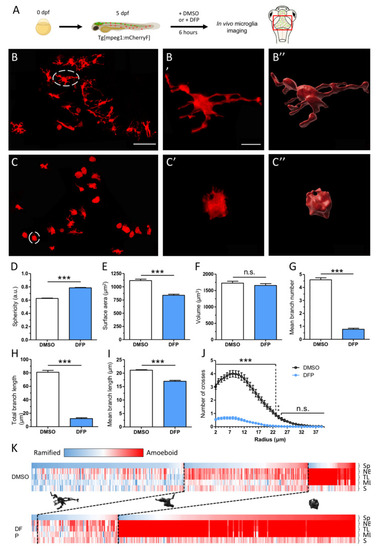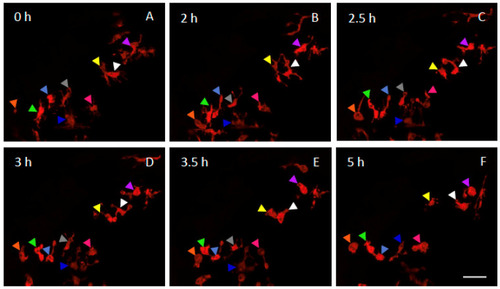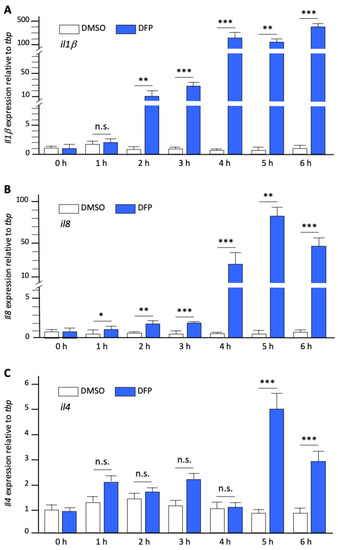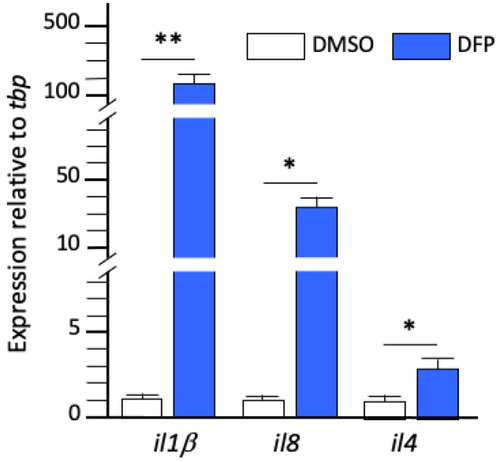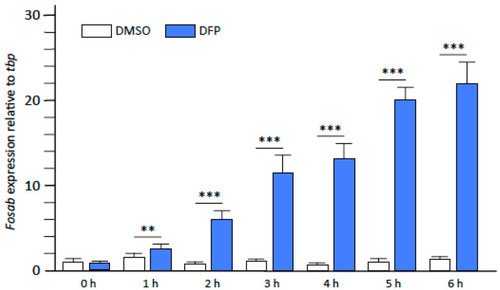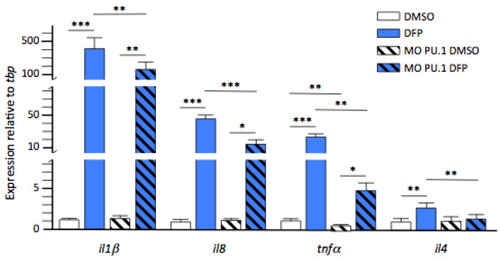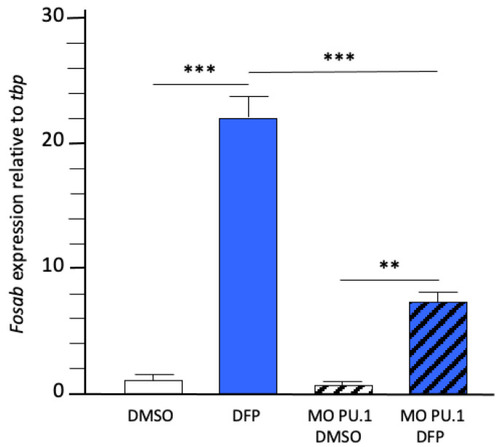- Title
-
Microglia Remodelling and Neuroinflammation Parallel Neuronal Hyperactivation Following Acute Organophosphate Poisoning
- Authors
- Somkhit, J., Yanicostas, C., Soussi-Yanicostas, N.
- Source
- Full text @ Int. J. Mol. Sci.
|
DFP exposure induced major morphological changes of microglial cells. ( |
|
Dynamics of microglia remodelling in DFP-exposed embryos. Selected snapshot views of live imaging of microglia showing the dynamics of microglia morphological changes in a living 5 dpf Tg[mpeg1:mCherryF] larva, before (0 h) and at different time points of a 6 h exposure to 15 µM DFP. Coloured arrowheads indicate individual microglial cells. Scale bar represents 20 µm. |
|
DFP exposure induced massive expression of pro-inflammatory cytokines ( |
|
DFP exposure induced massive brain inflammation. Expression levels of transcripts encoding cytokines |
|
DFP exposure rapidly induced massive neuronal activation. Expression levels of |
|
Microglia are key players in DFP-induced inflammation. Expression levels of transcripts encoding cytokines |
|
Microglial depletion markedly reduced DFP-induced neuronal hyperactivation. Expression levels of |

